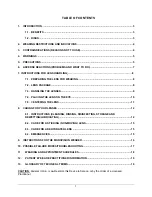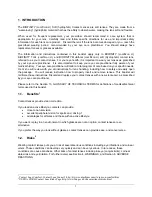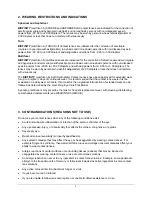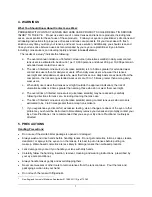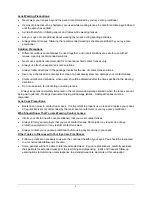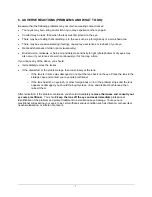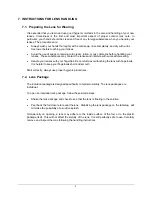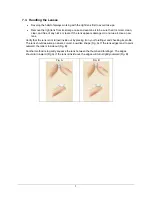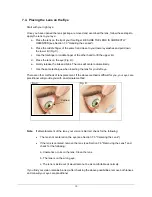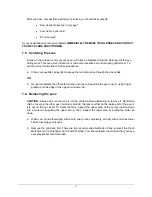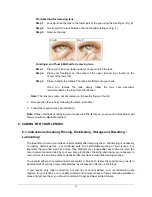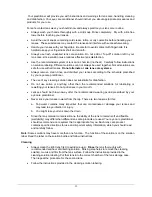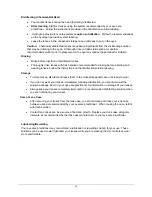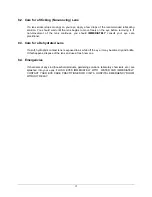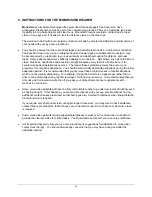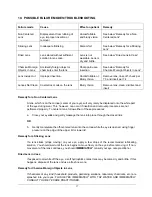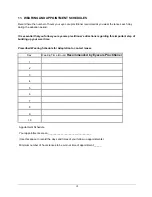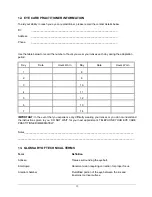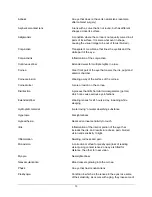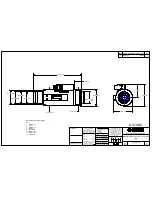
6
Lens Wearing Precautions
:
•
Never wear your lenses beyond the period recommended by your eye care practitioner.
•
If aerosol products such as hairspray are used while wearing lenses, be careful and keep eyes closed
until the spray has settled.
•
Avoid all harmful or irritating vapors and fumes while wearing lenses.
•
Ask your eye care practitioner about wearing the lenses during sporting activities.
•
Always discard lenses following the recommended wearing schedule prescribed by your eye care
practitioner.
Solution Precautions
:
•
Different solutions cannot always be used together, and not all solutions are safe for use with all
lenses. Use only recommended solutions.
•
Never use solutions recommended for conventional hard contact lenses only.
•
Always use fresh unexpired lens care solutions.
•
Always follow directions in the package inserts for the use of contact lens solutions.
•
Use only a chemical lens care system. Use of a heat care system can damage your contact lenses.
•
Sterile unpreserved solutions, when used, should be discarded after the time specified in the labeling
directions.
•
Do not use saliva for lubricating or wetting lenses.
Always keep lens completely immersed in the recommended storage solution when the lenses are not
being worn (stored). Prolonged periods of drying will damage lenses. Damaged lenses must be
discarded.
Lens Case Precautions
:
•
Bacteria can grow in contact lens cases. It is important to properly use, clean and replace your cases
at regular intervals recommended by the lens case manufacturer or your eye care practitioner.
Who Should Know That You are Wearing Contact Lenses
:
•
Inform your doctor (health care practitioner) that you wear contact lenses.
•
Always inform your employer that you wear contact lenses. Some jobs may require use of eye
protection equipment or may restrict contact lens wear.
•
Always contact your eye care practitioner before using any medicine in your eyes.
Other Topics to Discuss with Your Eye Care Practitioner
:
•
Follow-up visits are necessary to assure the continued health of your eyes. You should be instructed
to a recommended follow-up schedule.
•
Some patients will not be able to tolerate extended wear. Eye-care practitioners carefully evaluate
their patients for extended wear prior to prescribing and dispensing. Early and frequent follow-up
examinations to determine ocular response to extended wear are elements at this evaluation


